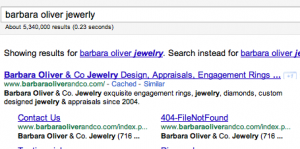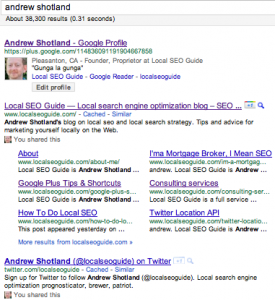Google SuperSize SiteLinks = SuperSize SEO Buzz Kill?
With Google rolling out it’s “new and improved” expanded sitelinks for “brands”, the SEO game just got a bit trickier, particularly for local queries.
Here’s what you get when searching for some pig feet + foie gras heaven at Au Pied De Cochon:
Some observations:
- If you rely on queries for business names to generate a lot of search traffic to your site, like most yellow pages sites do, you just got pushed way down the page, like Yelp appears in this example. Local directory sites will need to beef up their review efforts to try to at least get attached to the Place Page result for these queries.
- This might help SMB SEO/website usability as problems with these results are very visible. For example, you can see about that there are two different URLs for PDC’s menu. Here’s one that shows a 404 URL:

- This may have made brand reputation management campaigns a bit easier. Sites that want to push down bad results for brand queries can do strategic linkbuilding around URLs that are likely to get added as sitelinks (e.g. navigation links, URLs with decent inbound links, etc.). That said, in doing a little (unscientific) research it does appear that sites with what I would consider weak brands are only displaying two sitelinks. So go search for your brand and you may be able to get a quick idea of how strong it is in Google’s eyes.
- Personal rep management campaigns also seem to benefit. Check out this result for my name:

That’ll push those pesky DUI mug shots down, don’t you think?
The moral of the story:
On the plus side, the sitelinks now give businesses even greater control on how they appear in the SERPs. I fully expect to see further enhancements of this functionality where eventually the SERP looks more like a Place Page/Website/Plus combo than just a boring old SERP.
On the Debbie Downer side of things, sure looks like Google is trying to push everybody else out of the way. And don’t even get me started on Google Related.
Update: Mike Blumenthal countered this post on G+ saying that the sitelinks update doesn’t really change the position of non-Google/SMB content on these SERPs much for local bizzes. In many cases I am sure he is correct. But I still think overall this change will have a negative effect on sites that are not Google or the SMB.
